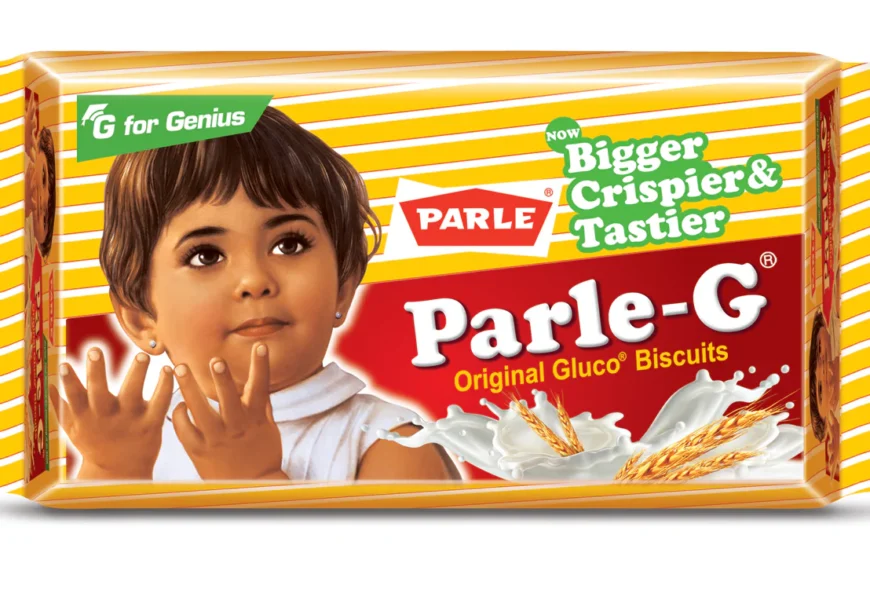Parle-G isn’t just a biscuit—it’s an emotion. It’s an integral part of countless childhoods, office tea breaks, and even late-night snack cravings. For many Indians, this sweet delight holds a nostalgic value, connecting generations from grandparents to children. Yet, few know the full story behind this iconic brand and how it transformed from a small dream into a cultural phenomenon. From its humble beginnings during the British Raj to its status today as a global favorite, Parle-G’s journey is a testament to resilience, strategic thinking, and a deep understanding of the Indian consumer.
Parle-G: A Legacy That Began with a Vision
The story of Parle-G begins in the backdrop of India’s struggle for independence. At a time when biscuits were considered a luxury only the British officers and the elite could afford, a tailor from Gujarat named Mohanlal Dayal saw an opportunity. Inspired by the Swadeshi movement and the desire to provide affordable treats to every Indian, he decided to start his own candy and chocolate business. This wasn’t just about profits; it was about giving children from less privileged backgrounds a chance to enjoy simple pleasures that had been out of their reach.
Learning the Craft in a Foreign Land
In 1929, Mohanlal made a daring move—he traveled to Germany to learn the art of making toffees and candies. He returned with a toffee-making machine and a dream to build something remarkable in India. Upon his return, he acquired a closed-down factory in the Vile Parle area of Mumbai, naming it after its location. Thus, Parle Products was born, with a small team consisting mostly of his family members.
Parle’s First Sweet Success: From Candies to Biscuits
Initially, Parle Products focused on making candies, with their first offering being a popular orange-flavored candy. But it was the launch of Parle Gluco biscuits in 1939 that truly marked the company’s turning point. During a time when most biscuits were unaffordable for the average Indian, Parle Gluco offered a nutritious, tasty, and affordable alternative. These biscuits quickly became a staple across Indian households, helping Parle make its mark in the industry.
How World War II Cemented Parle’s Popularity
The demand for Parle Gluco biscuits soared during World War II. Both the Indian and British armies included these biscuits in their rations, appreciating their high energy content and long shelf life. The biscuits became synonymous with sustenance during a time of hardship. This association not only helped the brand grow but also instilled a sense of loyalty among consumers that would last for generations.
Post-Independence Struggles and the Path to Resilience
With India’s independence in 1947 came new challenges. The country faced a wheat shortage, leading Parle to temporarily halt the production of their glucose biscuits. However, the company adapted by shifting to alternative ingredients and even released advertisements urging consumers to support locally produced items. When the wheat supply stabilized, Parle was quick to bring back their beloved biscuits, reaffirming their commitment to the people of India.
Fighting for Identity: The Battle of Glucose Biscuits
In the 1960s, Parle faced fierce competition from other companies launching their own glucose biscuits. The market was flooded with similar products, creating confusion among consumers about which was the original. Parle’s response was strategic: they invested in branding and introduced the now-iconic yellow wax paper packaging featuring the illustration of a little girl—a design that has remained largely unchanged for over 70 years.
Rebranding as Parle-G: The Secret to a Timeless Brand
In 1982, Parle Gluco was rebranded as Parle-G, with the “G” standing for “Glucose.” This rebranding coincided with the launch of their first television commercial, featuring heartwarming moments between a grandfather and his grandchildren, all united by their love for Parle-G. The TV ad reinforced the brand’s image as a family favorite, further cementing its place in the hearts of millions.
The Rise of Parle-G in the 90s: Shaktimaan and the Power of Nostalgia
For those who grew up in the 90s, the association between Parle-G and Shaktimaan, India’s first television superhero, is unforgettable. With Shaktimaan as their brand ambassador, Parle-G became a must-have for every child. It was a genius marketing move, leveraging the popularity of a beloved character to create an even stronger bond with young audiences.
A Focus on Affordability: Why Parle-G Never Raised Prices Drastically
Parle-G’s commitment to affordability has been one of its strongest assets. Unlike many other companies, Parle-G has made strategic decisions to ensure their biscuits remain accessible to all. Instead of hiking prices drastically, they reduced the quantity per pack whenever inflation hit. This subtle approach meant that consumers could continue buying the brand they loved without feeling the pinch in their pockets.
How Parle-G’s Secret Recipe Was Shared with Local Bakeries
In the 1990s, as demand for Parle-G continued to grow, the company faced challenges in keeping up with production. To ensure a steady supply, Parle made the bold decision to partner with local bakeries, sharing their secret recipe to maintain consistent quality. This move not only solved their supply chain issues but also fostered a sense of community ownership, allowing small businesses to thrive while delivering Parle-G biscuits across the country.
Global Expansion: Taking Parle-G Beyond India
While Parle-G’s roots are firmly planted in Indian soil, its popularity has spread far beyond. Today, Parle-G is enjoyed in countries like the USA, UK, Canada, Australia, New Zealand, and even China. In many of these countries, Parle has set up manufacturing units, ensuring that the taste remains consistent and fresh. Parle-G has truly become a global ambassador of India’s rich heritage and culinary traditions.
How Parle-G Dominates the Market Today
Despite intense competition, Parle-G remains the market leader with over 40% market share in the Indian biscuit segment. This dominance can be attributed to the brand’s deep understanding of Indian consumers, efficient distribution network, and the consistent quality that people trust. Parle-G is more than just a biscuit; it’s a brand that has earned the unwavering loyalty of millions.
Parle-G’s Strategy: Staying Relevant in Changing Times
Parle-G has always been quick to adapt to changing market trends. When they noticed a demand for savory snacks, they launched Monaco biscuits in 1938. Later, they introduced products like Cheese Rings and Poppins, catering to the evolving preferences of consumers. Parle’s ability to innovate without losing sight of its core values has kept it at the forefront of the industry.
The Magic Behind Parle-G’s Branding
The iconic packaging of Parle-G is a lesson in the power of consistency. For decades, the image of the little girl on the yellow wrapper has been a symbol of trust and nostalgia. Unlike many brands that constantly update their logos and colors, Parle-G’s decision to stick to its classic design has helped it maintain a strong brand identity, resonating with both older and younger generations.
Parle-G During the Pandemic: A Story of Resilience
The COVID-19 pandemic brought unprecedented challenges, but it also marked one of the biggest periods of growth for Parle-G. With people stocking up on essentials during lockdowns, Parle-G became a comfort food, offering familiarity during uncertain times. In 2020, Parle-G saw a dramatic surge in sales, making it the best-selling biscuit brand in the world.
Conclusion
From a small factory in Vile Parle to becoming the world’s best-selling biscuit brand, the story of Parle-G is a testament to vision, hard work, and the power of connection. It’s a brand that has stayed true to its roots while embracing change, proving that even the simplest of treats can create lasting memories. For many, Parle-G will always be more than just a biscuit—it’s a taste of home.









